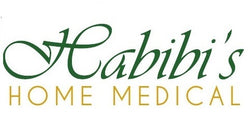4 Tips for Baby Skin Care
Your baby's soft, cuddly skin is different from yours. It's more delicate, more easily irritated, and more sensitive to temperature and sun. Though toddlers are a bit tougher, they can still get rashes or itchy spots. Here's what can you do to protect that sweet skin.
Limit Baths for Little Ones
Bathing a baby every other day is enough, says Dawn Davis, MD, of the Mayo Clinic in Rochester, Minn. More frequent baths can dry out your baby's skin. Infants under about 6 months old don't move around much, so they don't get into many messes. (Enjoy it while it lasts!)
Test bath water with your wrist to be sure it's warm, not hot. The inside of your wrist is the closest thing you've got to baby skin, says Davis. Fill the bath up to your baby's chest, rather than giving a sponge bath, so that your baby stays nice and warm. Of course, be sure you're holding him securely! Pat him dry, rather than rubbing his sensitive skin.
When kids start to crawl and eat solid food, they're ready for more frequent bathing.
Use the Right Cleanser Sparingly
For babies, use a mild cleanser only on body parts that get dirtiest: the scalp, face, neck, hands, feet, and diaper area. Gentle products made for infants are best. Traditional body washes or bar soaps can be acidic and can irritate tender skin. Look for products labeled:
- Tear free
- pH neutral
- No dye
- No fragrance
Toddlers can handle more products, but they still do best with mild cleansers. "Toddlers can be messy," Davis says. "They think they're the boss of their bath time behavior, so they can get soap in their eyes or mouth."
Be sure to check a cleanser's list of ingredients, says Elaine C. Siegfried, MD, of Saint Louis University. The word "natural" on the front doesn't mean it's right for a baby. "Remember, poison ivy is natural," Siegfried says. "It's the back, not the front, of the package that counts."
Moisturize as Needed
Creams and ointments made for babies are good choices if your little one needs a moisturizer. Their thick, rich texture may lock in moisture better than lighter products. Petroleum jelly works well, too. On tiny newborns, use any moisturizer sparingly.
Start Sun Protection Right Away
Keep your baby in the shade, if possible. Their skin is thinner and more sensitive. Cover them up with clothes and a hat, limit their time in the sun (especially between 10 a.m. and 2 p.m., when the sun is strongest), and don’t let them get overheated. If they absolutely need to be out in the sun, put a little bit of sunscreen with an SPF of at least 30 on small areas such as the cheeks and back of the hands, after testing to see if the baby is sensitive by first trying a small amount on the baby’s wrist.
For older babies and toddlers, barrier sunscreens -- containing good old zinc oxide and titanium dioxide -- are best. They filter out both UVA and UVB rays.
Whatever you use, look for gentle formulas with SPF 30 or higher and reapply liberally every two hours, more often when in and out of the water. Avoid midday sun, and remember to watch out for reflections off of water or snow. If your child shows any signs of sunburn or dehydratioin, get them out of the sun immediately.
Booty Goo is growing nationwide and Moms love it! It's unique fast acting formula Prevents, Treats, and Soothes diaper rash. Booty Goo has been recommended by Best Products Media Guide, Moms on the Move with Linda Swain, New York Family Magazine, and The Mom and Dad Reviews. Booty Goo has anti-bacterial and anti-fungal properties that help fight the cause of rashes, while it's wetness repelling formula keeps the skin from coming into contact with irritants. Booty Goo applies and removes easily, does not stain clothing, and is long-lasting.





